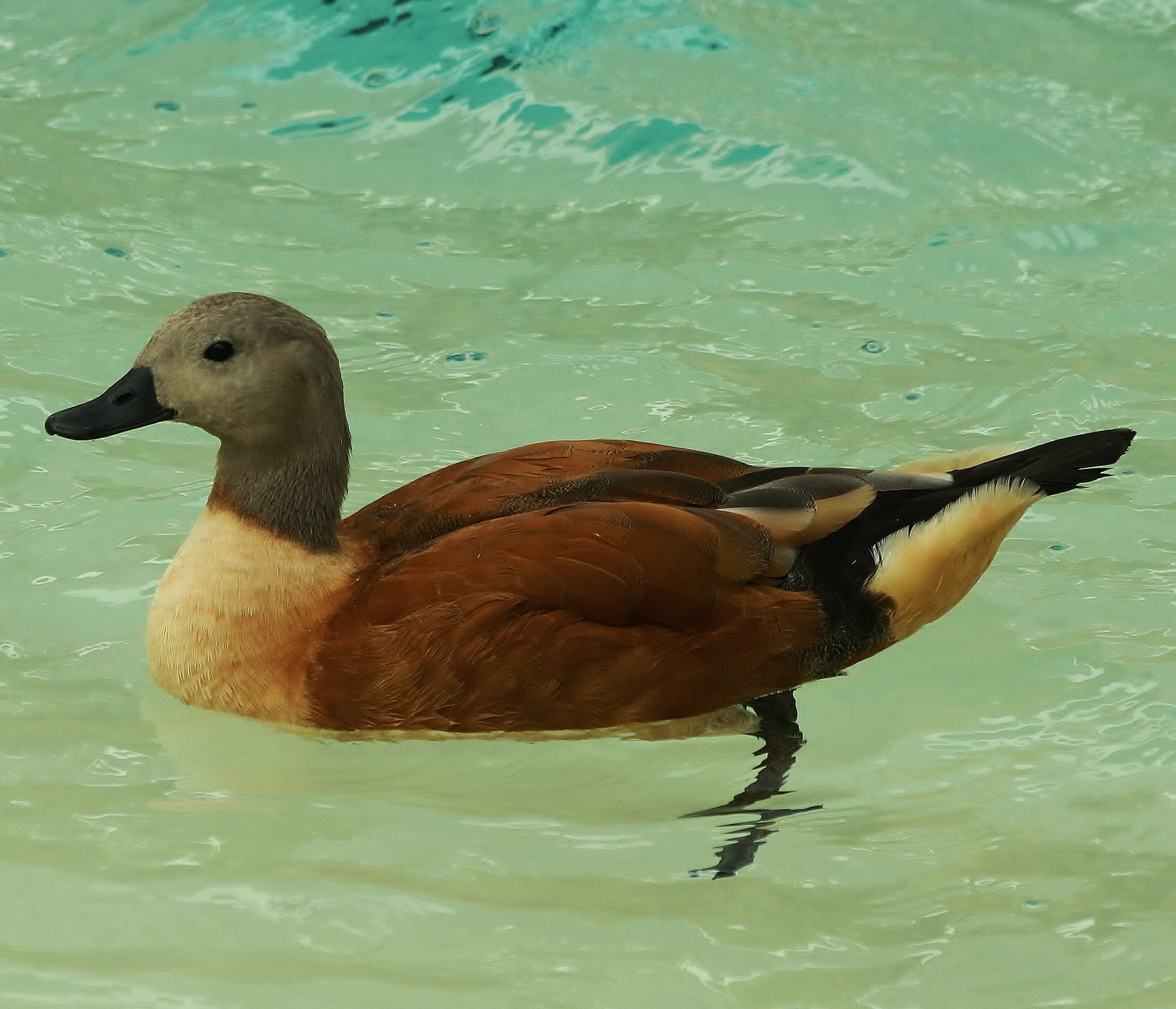 |
| Photo by Miriam Bauman (Internet Bird Collection) |
Common name:
South African shelduck (en); pato-ferrugíneo-sul-africano (pt); tadorne à tête grise (fr); tarro sudafricano (es); graukopfkasarca (de)
Taxonomy:
Order Anseriformes
Family Anatidae
Range:
This species is found throughout South Africa, in Namibia and in south-eastern Botswana.
Size:
These birds are 61-66 cm long and weigh 1-1,5 kg.
Habitat:
South African shelducks are found in shallow water wetlands, often along muddy shorelines with low grassy or scrubby vegetation. Their distribution is also influenced by the availability of vacated holes of aardvark and other mammals, which they use for nesting, so they are mostly found in wetlands located within semi-arid and grassland regions.
Diet:
They forage both in the water and on nearby crop fields, eating adult and larval crustaceans, larval insects, algae and agricultural crops like maize, rice, sorghum, wheat, oats, barley and peanuts. They also eat the seeds, leaves and roots of aquatic grasses and reeds.
Breeding:
These birds breed in March-December. The female builds the nest, using grasses, down and feathers, in a pre-existing cavity in the ground, most typically in an aardvark Orycteropus afer burrow, but also in holes of springhares Pedetes capensis or porcupines Hystrix africaeaustralis. There she lays 5-15 eggs which she incubates alone for 28-32 days. The chicks are cared for by both parents, fledging 65-75 days after hatching and becoming independent 1-2 months later.
Conservation:
IUCN status – LC (Least concern)
This species has a very large breeding range and the global population is estimated at 50.000 individuals. The use of waterbodies for human recreation and the decline in aardvark populations could affect this species in the future, but the population is presently suspected to be increasing.







